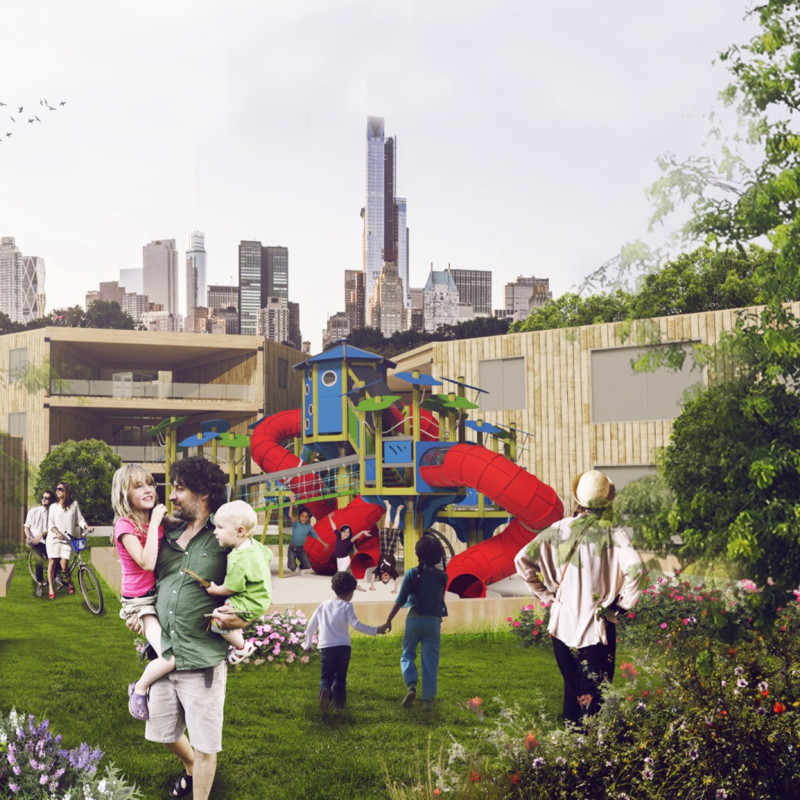5 key facts about this project
Architecturally, the HIVE represents a shift in urban housing design, addressing contemporary needs for both functionality and environmental responsibility. By employing a mixed-use development strategy, the project facilitates a diverse demographic, accommodating varying income levels and promoting social inclusivity. This architectural approach is imperative in an urban landscape where community interactions and accessibility to amenities significantly affect the quality of life.
Mixed-Use Development and Community Hubs
A significant aspect of the HIVE project is its commitment to mixed-use development. By combining residential units with communal amenities, including recreational areas, retail spaces, and service facilities, the design fosters a sense of community and belonging among its residents.
The architectural organization features an innovative octagonal grid that creates multiple pathways and courtyard spaces, maximizing pedestrian accessibility and interaction. These courtyards serve as green lungs within the urban environment, promoting outdoor activities and social engagement. The architectural positioning of these spaces also ensures optimal daylight exposure, contributing to the overall well-being of inhabitants.
Distinctive Material Selection and Structural Integrity
Materials used in the HIVE project are carefully chosen to minimize environmental impact while ensuring structural performance. Key materials include Glulam timber and Cross Laminated Timber (CLT), which provide strength and durability without sacrificing sustainability. The use of wood not only aligns with contemporary architectural trends but also contributes to thermal efficiency, enhancing the building's energy performance.
Additionally, the project employs concrete for foundational elements, ensuring stability and longevity. This combination of materials demonstrates a thoughtful approach to construction, focusing on renewable resources that meet the demands of modern architecture.
Adaptive Design and Future-Proofing
The modular nature of the living spaces within the HIVE allows for reconfiguration and adaptability, accommodating changing family dynamics and economic circumstances. By designing units that can easily transform or expand, the project effectively addresses future housing needs, ensuring longevity and relevance in a rapidly evolving urban context.
Moreover, the implementation of buffer zones between structures allows for multifunctional outdoor spaces that are both flexible and programmable. This architectural detail enhances the livability of the project, offering opportunities for recreational activities and community gatherings.
For a comprehensive understanding of the HIVE project, including detailed architectural plans, architectural sections, and architectural designs, explore the project presentation. Engaging with these elements will provide deeper insights into the innovative design strategies and architectural ideas that define this significant contribution to urban architecture.


























